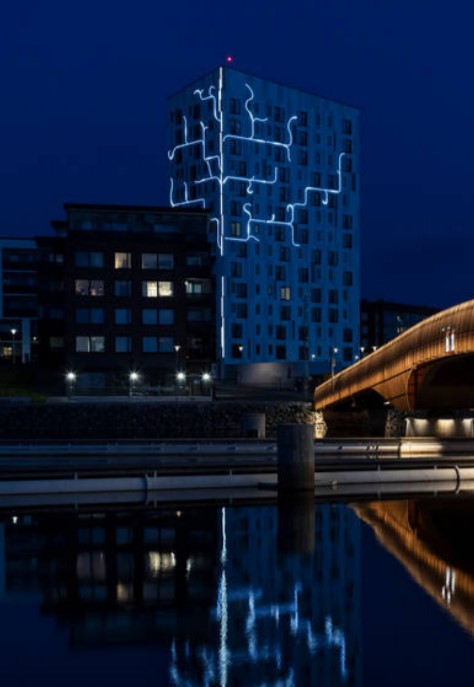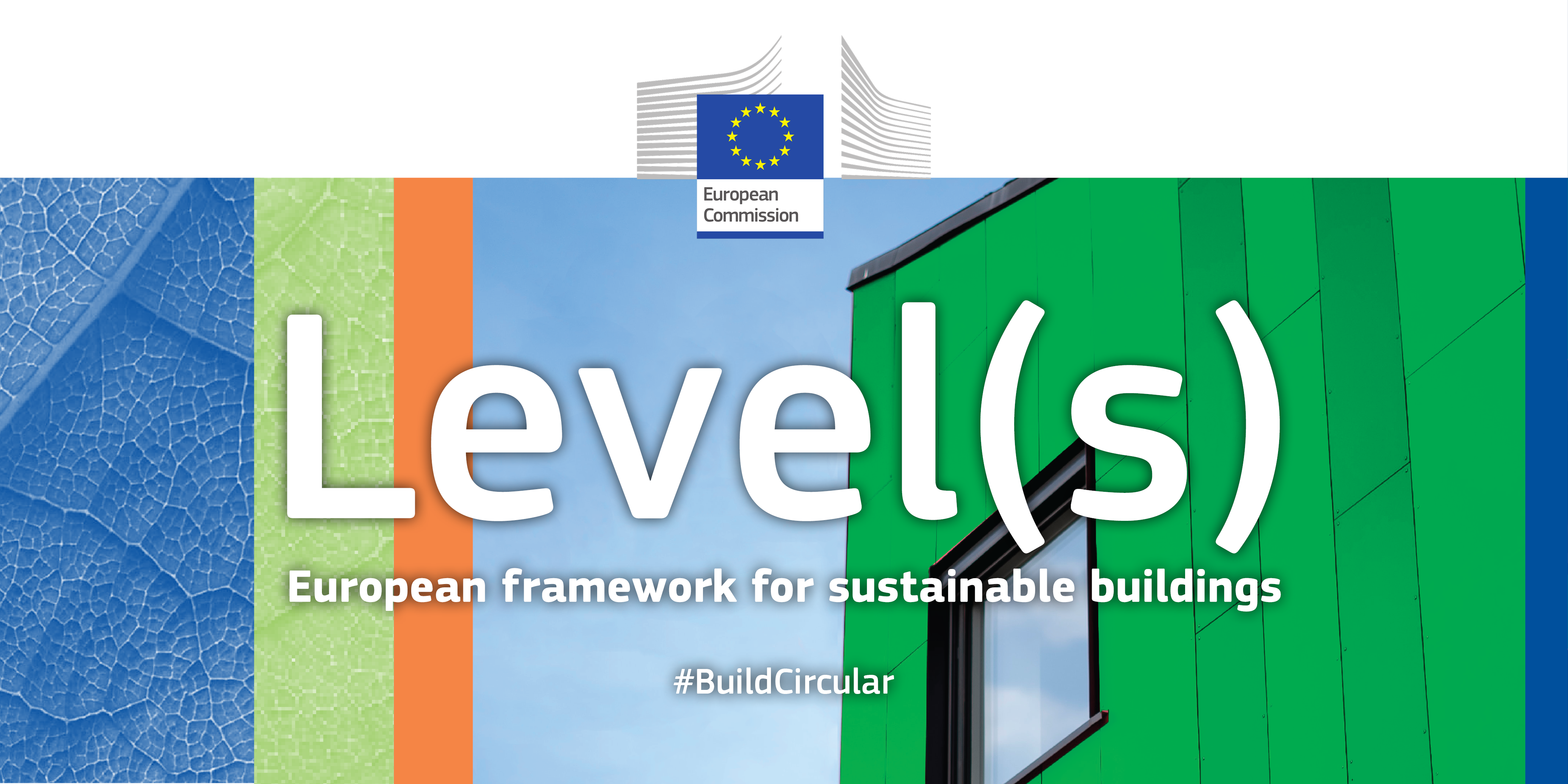The EU Green Deal, launched in December 2019, gave the motto for the EU’s climate-neutral ambitions. The new Circular Economy Action Plan, launched in March 2020, sets the agenda for sustainable growth, making the EU economy greener while maintaining its competitiveness and securing new rights for consumers. In the meantime, the European Commission (EC) is preparing roadmaps for further sustainability actions like the Renovation Wave on decarbonisation and clean energy systems; the EU Climate Law; or the Sustainable Europe Investment. And it is also gearing up for the official launch of Level(s).
Any action towards sustainable buildings implies a long, hard look at all project stages and across the building chain. Architects, designers, manufacturers, engineers, builders, investors, property developers, property managers (not to mention future tenants) – all of them have their own sustainability needs and challenges. All of them have their own contribution to a building’s carbon footprint, and we cannot modernise or improve buildings without the full participation of all actors in the built environment. With that in mind, Level(s) is the first-ever European Commission framework for improving the sustainability of buildings, living by the values of flexibility, resource efficiency, and circularity.
Carbon-neutrality is one of the biggest keywords in EU environmental policy. It is no wonder, then, that buildings and the construction sector are mentioned in the EU Green Deal as one of its areas of action. It is important to find a balance between improving the quality and sustainability of the construction materials used and the affordability of the building. The Circular Economy Action Plan takes this one step further by mentioning Level(s) as a framework for construction and buildings to increase sustainability, with important implications for areas such as Green Public Procurement.
“The concept behind the Level(s) framework started to take form once the building sector became a key area of action for the European Commission in terms of resource efficiency and circular economy”, recounts Kestutis Sadauskas, Director for ENV.B – Circular Economy and Green Growth at the European Commission’s Directorate-General for the Environment (DG ENV). “We realised that, to truly achieve sustainable transformation in the building sector, we need a common language that not only could be used across the building chain, but also help with data comparison across different countries.”
So how is the Level(s) framework different from other certification schemes or assessment tools?
Level(s) was designed to encourage users to think about the whole lifecycle of a building, providing a basis for quantifying, analysing and understanding the lifecycle. It goes beyond a building’s service life and value by including elements that happen before and after this stage, also providing indicators for recovery, reuse, and recycling of materials. When using Level(s), the user is sovereign: they choose how to implement Level(s), adapting it to their needs, pace, and understanding of the framework.
A Level(s) journey can start by implementing standard data as an entry point, and later working with more specific data items that even better represent their building project, as familiarity with the framework increases. The Level(s) indicators can also be inserted into existing certification schemes to ensure they comply with key objectives of sustainable policy actions.
“The end goal is that, by using Level(s), users are investing in a cost-effective framework that helps them future-proof their building projects in line with circular economy, whole life carbon performance and other green policy goals”, explains Kestutis Sadauskas. “We know from the Level(s) testing phase that the building sector sees the common language and metrics, and the fact that different stages of the building chain came together to find a common solution, as an important added value of this framework. In a way, are not just harmonising data and metrics: we are also harmonising the built environment’s vision of a sustainable future.”
All in all, Level(s) is perfectly placed to help the building sector transition into a sustainable future.
Developing Level(s) – testing phase testimonials from manufacturers, investors, property developers
The Level(s) framework started being developed back in 2015 by the European Commission’s Directorate-General for the Environment (DG ENV). It started as a great collaboration between a large number of building professionals, and it benefitted from pan-EU knowledge and expertise. The publication of the Level(s) beta version in 2017 marked the beginning of the framework’s testing phase. Between 2017 and 2019, the Level(s) indicators were tested by more than 130 projects (both residential and non-residential, in new built and renovation) in 21 EU member states.
Among the Level(s) testing audiences were manufacturers, investors, and property developers – who were particular keen to assess Level(s) added value to sustainability, circularity and quality of life.
“Level(s) is an escalator, a virtual ‘travellator’ on which to start and progress the journey towards better buildings.”, explains Philippa Gill, who was deeply involved in Level(s) testing phase. “By this, we mean buildings that are better for those who occupy them, as well as have a low impact and hopefully even, one day, contribute positively to the environment.”
Likewise, Bionova / One Click LCA was part of the Level(s) pilot process in Finland through their Carbon Heroes Benchmark Program for 1000 buildings. The framework was very well received by the Finnish building sector. “Level(s) has increased the interest of public authorities and new stakeholders about whole life cycle thinking in the construction and built environment”, remarks Panu Pasanen, Bionova / One Click LCA’s CEO. “It has increased the understanding of the need to simplify and speak in common terms about sustainable performance of buildings, which helps people to change information and work together in the complex supply chain in the construction industry.”

Still in Finland, the manufacturing company Stora Enso also led one of the Level(s) testing projects by incorporating the framework’s indicators in their Lighthouse Joensuu project. With Level(s) informing embodied carbon calculations through its lifecycle assessment (LCA) indicators, this 14-floor residential building reported resource efficiency as mass of building materials based on the bill of materials. The data allowed the project to calculate impacts of life cycle global warming from cradle to grave.
“In addition to the Lighthouse Joensuu building, we also used the Level(s) framework to calculate sustainability performance of our schools concept. The learnings of both projects have been summarised in the Level(s) Testing report from the Finnish Ministry of Environment”, told us Roy Antink, Stora Enso’s Senior Vice President. “Level(s) has the potential to help mainstream circular and low-carbon building. It can be the common language that aligns the value chain and drives life cycle thinking from early idea inception. What is more, it can be used by (sub)national governments to measure progress on key issues such as embodied carbon and resource use – in a word, circularity.”
Level(s) was also tested in through the LIFE Level(s) project, which was led by the Spanish Green Building Council and involved seven other Green Building Council entities. The project explored the way Level(s) indicators can be implemented on a pan-European scale through certification, data, procurement, and training.
The results and findings from the Level(s) testing phase have been crucial to develop and advise on the final version of the Level(s) framework. This final version will ensure a streamlined assessment and reporting process. It will also facilitate a quicker generation of comparable data, thanks to its provisions for knowledge-sharing across countries, companies, and throughout all stages of a building project.
“It has been fantastic to witness the enthusiasm of the building sector, with companies and authorities from start to end of the building chain, in testing and promoting Level(s) as a reliable, future-proofed framework”, remarks Kestutis Sadauskas. “It bodes very well for a sustainable future in the building sector, and for the adoption of Level(s) across Europe once the final version of the framework is launched”.
Getting involved
With the official Level(s) framework about to be launch, it is important to spread the word and facilitate access to this framework for all building sector actors, big or small. So what is the best place to start for investors and property developers?
“The first step for investors and property developers will be to start requiring projects teams (designers, developers, …) to deliver documents and information using the Level(s)-based assessment; and using the matrix to report back on the progress of the project from the early phases in particular.” Recommends Panu Pasanen. “Level(s) will help in understanding the impacts of decisions and how projects are doing in terms of building sustainability.”
The same idea is corroborated by Philippa Gill: “Level(s) provides a clear pathway towards a low carbon real estate market. It allows any property owner or manager to begin the journey to a more sustainable market at whichever point of the journey they are currently at; it then guides the users to use more advanced scenarios, and deeper investigations, ensuring that their journey continues”.
When it comes to manufacturers, and according to Stora Enso’s Roy Antink, the important thing is to start incorporating it as part of each product’s process: “Level(s) represents the future of building construction. Regardless of its state as voluntary tool now, it is good practice to consider the framework as part of your product innovation and management. Doing so will help you future proof products and assets.”
Building sector companies can also learn more about Level(s) through the upcoming Level(s) Stakeholder Briefing Sessions. This fully digital series of events was developed to better inform building sector entities about the benefits of Level(s), and to help new users as they begin their Level(s) journey.
The Level(s) framework will be officially launched in October-November 2020. To know more or get involved in this EC-led framework for sustainable buildings – including the upcoming Level(s) Stakeholder Briefing Sessions – visit https://ec.europa.eu/environment/eussd/buildings.htm or contact Ms Josefina Lindblom, leading the work on Level(s).






